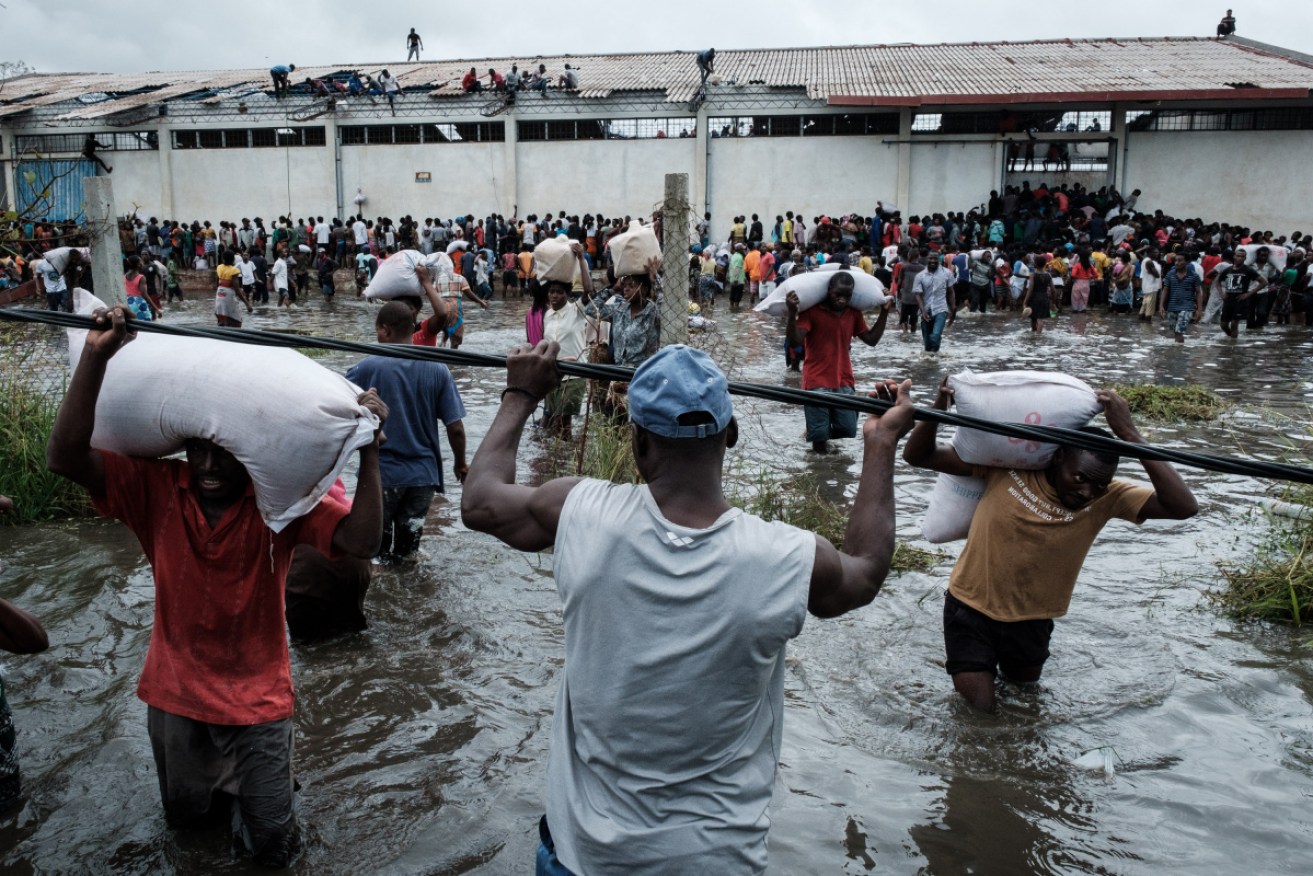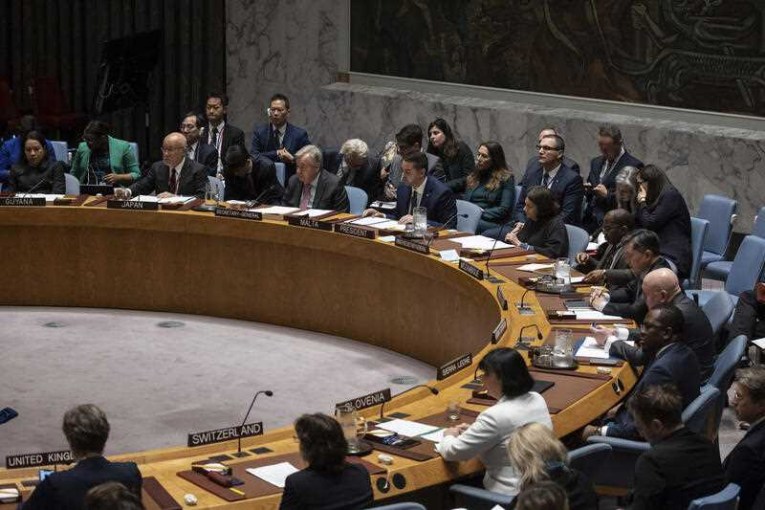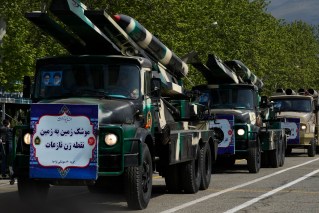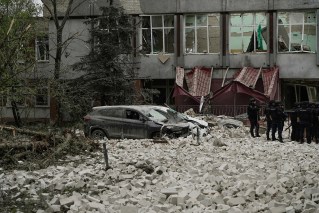Australia’s two cyclones are small change compared to Mozambique’s agony


Aid agencies fear a massive humanitarian crisis as hundreds of thousands of people in southern Africa are displaced. Photo: Getty
At least 15,000 people are missing after deadly cyclone Idai struck Mozambique and moved to neighburing Zimbabwe and Malawi, leaving an inland sea which could be seen from space.
Idai battered the low-lying city of Beira last week, leaving tens of thousands of its 500,000 residents homeless without food, shelter, power and clean water.
By Saturday (AEDT), local reports emerged of a cholera outbreak in the city, describing the situation as “boiling” as the Red Cross estimated at least 90 per cent of the city had been destroyed.
Zimbabwean Energy Minister Joram Gumbo said the docking terminals at Beira port had been damaged and that Zimbabwe had 62 days’ supply of petrol and 32 days for diesel, with long queues in the capital.
United Nations Secretary-General Antonio Guterres said he was saddened by the “heart-wrenching images of human suffering” and urged the world to step up support for the relief effort.
The African cyclone comes as Northern and Western Australia bunker down for the impact of dual cyclones Veronica and Trevor which remained as category four storms on Saturday.
About 12.30pm, Cyclone Trevor struck the Northern Territory coastline in the Gulf of Carpentaria in a weather system described as being the size of the state of New South Wales.
Emergency services and the Australian Defence Force evacuated 2200 people from isolated communities in the Gulf region on Thursday and a tent city was set up in Darwin at various locations including basketball stadiums and school halls.
In Western Australia, Cyclone Veronica was lashing the coastal towns of Dampier, Karratha and Port Headland.
#CycloneVeronica is now clearly visible on the Dampier radar. Gales to develop along the Pilbara coast from this afternoon. Hourly updates from now on. See the details at https://t.co/B1MVXBHmpJ pic.twitter.com/el3tUfRANN
— Bureau of Meteorology, Western Australia (@BOM_WA) March 23, 2019
According to the official African death toll, which is expected to rise, 242 people were killed in Mozambique in the storm and resulting floods.
In Malawi, 56 were killed while Zimbabwe has recorded 142 deaths.
As survivors gathered in informal camps and health officials warned of the danger of cholera and other diseases, UNICEF executive director Henrietta Fore said the situation on the ground was critical, with no electricity or running water.
“Hundreds of thousands of children need immediate help,” she said, estimating 1.7 million people were affected by the storm.
Around 45km west of Beira, in the village of Guara Guara, the government set up a makeshift camp for people rescued nearby, with little water and no toilets.
As for many such camps, progress was slow as aid had to be delivered by helicopter.
Sixty-year-old Esther Zinge, from near the town of Buzi, said help was coming “very slowly” and had to be given to children first.
“The conditions are terrible, and more people keep coming,” she said.
In Zimbabwe’s Coppa Rusitu Valley, a township in Chimanimani near the Mozambican border, hundreds of homes were flattened by large rocks and mudslides from a nearby mountain, burying some residents at night when most were sleeping.
Some survivors have taken refuge at churches and centres offering temporary shelter as they deal with the trauma of their losses while private citizens, international aid agencies and the government rushed humanitarian aid to affected areas.
15,000 people in Mozambique are stranded by floods and in need of rescue after Cyclone Idai, and hundreds of thousands of people are displaced.
Flooding around the port city of Beira, which was almost completely destroyed, covers 835 square miles. pic.twitter.com/yq5RnauFSI
— AJ+ (@ajplus) March 21, 2019
Briefing his team late on Thursday night, Connor Hartnady, rescue operations task force leader for Rescue South Africa, said Beira residents were becoming fed up with shortages.
“There have been three security incidents today, all food related,” he told his team, without giving further details.
Mr Cartnady also said a group of 60 people had been discovered trapped by flood water in an area north of Beira during a reconnaissance flight.
Rescue teams and the government were deciding how best to help them, he said, either by airlifting them to safety or dropping supplies.
The storm’s torrential rains caused the Buzi and Pungwe rivers, whose mouths are in the Beira area, to burst their banks.
According to international aid organisation Care, almost 400,000 people have been displaced across the three countries as a result of the category 4 storm as major roads and infrastructure have all but been destroyed or damaged.
Homes destroyed. Roads washed away. Livelihoods ruined. Four days after making landfall in Mozambique, Malawi and Zimbabwe, Cyclone #Idai has left more than 400,000 people in need of immediate assistance. You can help: https://t.co/LZXxGc3ooM pic.twitter.com/u5cgVTRPGg
— CARE (care.org) (@CARE) March 20, 2019
Zimbabwe’s Ministry of Information said at least 30 students, two headmasters and a teacher from three schools were missing in the eastern region of the country.
In the capital Harare there were shortages of diesel, leading to long queues following reports earlier this week that a control room for the pipeline in Beira that transports fuel to Zimbabwe had been damaged.
-with agencies








